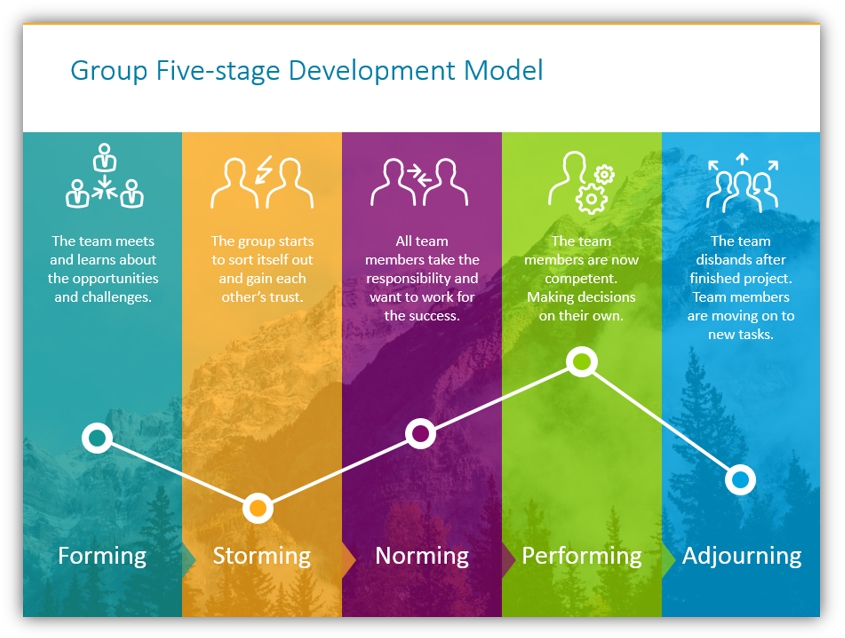
Cooperative learning is a learning method that allows small groups of people to work cooperatively on a task, and it applies to students from kindergarten to college (TeacherVision, n.d.). It is one of the practical teaching approaches for high school students to learn about different subjects. In classrooms, cooperative learning allows students to work together in smaller groups to achieve a learning task assigned by the teacher. In groups, the students can present their ideas, share information, and interact with others instead of listening to the teacher talking and writing notes all the time. Therefore, the benefit of cooperative learning is having a chance for peers to gather together and support each other with discussion (TeacherVision, n.d.). It works well in both face-to-face and online environments to encourage people to teamwork. Then, each group member would assign a part and take responsibility for their parts to commit the group task (TeacherVision, n.d.). When the cooperative learning group completes the learning task, the group members obtain value in motivation, problem-solving, teamwork, and collaboration (TeacherVision, n.d.). Moreover, students who develop collaboration skills in cooperative learning could become adults who will work effectively in teamwork in any workplace. However, the negative impact for cooperative learning is that there could be a chance for students to talk to each other about the task-unrelated topic (Roetheli, 2018). It could lose the opportunity for students to have an academic conversation (Roetheli, 2018). Therefore, the teacher needs to take the responsibility to circulate the room and to join in groups, make sure they are all on the right topic.
There are different types of strategies in cooperative learning, such as the Jigsaw model and project-based learning. The Jigsaw model, developed by Elliot Aronson in 1971, enables each student to take responsibility for one subtopic or subcategory, do research, and then teach the rest of the group members (Gonzalez, 2015). In this YouTube video, Jennifer (2015) talks about the five steps of the Jigsaw model to encourage students’ collaboration and to result in better learning outcomes.
The first step is to divide students into smaller groups called the Jigsaw Group in the video. The second step is to divide the topic into subtopics with the same number of subtopics as the number of students in the group. Then, the next step is to assign one subtopic to each person in the Jigsaw Group. Each student is responsible for one subtopic, and they need to do research and study on their own. After students finish their research, they meet in Except Groups, which is step four. In this step, all the students who have the same subtopics gathered together to discuss their ideas and collaborate in preparing a presentation to show to their Jigsaw group later. Eventually, the last step- step 5 indicates that students return to their Jigsaw Groups to present their information while others listen and write notes (Gonzalez, 2015).
Furthermore, for other types of cooperative learning, such as project-based learning, Tuckman’s model would help students improve their performance when students are assigned randomly into groups and want to define their roles in the team. In 1965, Bruce Tuckman established the five stages: forming, storming, norming, performing, and adjourning, as Tuckman’s team development model ( Toggl, n.d.). The description of each stage of the model is explained in the figure (see Figure 1). In developing a team, the stages start from where the team is formed to where the team is end ( Toggl, n.d.) It helps individuals acknowledge every part of a team development process. Following Tuckman’s model, it supports team members plan clear direction, define each work role, adjust their behaviours, and eventually build a high-functioning team to accomplish their final learning task.

According to my pod’s topic – Descriptive Statistics: Mean, Median, Mode, Variance and Standard Deviation, I think cooperative learning would be helpful for part of the learning process, such as problem-solving activity. From my own learning experience on Statistics/Mathematics at high school, the combination of direct instruction and cooperative learning is the most popular approach for teachers to structure the lecture. During the first half of the class, the direct instruction approach would be used to present and teach the knowledge to students. In this case, the teacher would stand in front of the classroom and introduce the main points of this lecture by writing down the definition of each concept on the whiteboard. The teacher would use examples to apply to each concept to help students better understand them. At the same time, students would copy the notes from the whiteboard while listening to the class. Once all the students have heard the conceptual details of what they are learning, it is time for cooperative learning activity.
The teacher could form the group and ask them to work on application questions or discuss the learning material in a limited time frame. After students work together toward their goals, they could have a chance to present their results to the class for class-wide discussion, which allowed other groups to hear the ideas and learn something new. Overall, I think cooperative learning itself is not the best learning approach align with our topic of Descriptive Statistics. At the beginning of the class, most students may not focus on the learning material yet, so they will not pay attention when they break into groups ( Zook, 2018). Group discussion may just become talking off topics without learning anything. Therefore, the best solution aligns with our topic: to start with direct instruction by presenting the knowledge to students and ending with breakout group interacted activities.
Reference
Gonzalez, J (2015). The Jigsaw Method [Video]. YouTube. Retrieved from https://www.youtube.com/watch?v=euhtXUgBEts&t=183s
Infodiagram. (2019). 7 Design Ideas for Group Development Chart Slide – Blog – Creative Presentations Ideas. Blog. Retrieved from https://blog.infodiagram.com/2018/06/7-group-development-ppt-chart-ideas.html.
Roetheli, A. (2018). Disadvantages of Using Cooperative Learning in the Classroom. Teaching in the Fast Lane. https://teachinginthefastlane.com/2018/05/disadvantages-of-cooperative-learning.html.
TeacherVision (n.d.). Cooperative Learning: Teaching Strategy (Grades K-12). Retrieved from https://www.teachervision.com/professional-development/cooperative-learning.
Toggl. (n.d.). 5 Stages of Team Development. Retrieved from https://toggl.com/track/stages-of-team-development/.
Zook, C. (2018). What Is Cooperative Learning and How Does It Work? Digital Curriculum for CTE & Elective Teachers. https://www.aeseducation.com/blog/what-is-cooperative-learning-and-how-does-it-work#:~:text=Cooperative%20learning%20is%20the%20process,and%20help%20each%20other%20learn.&text=While%20it’s%20debatable%20as%20to,powerful%20and%20effective%20teaching%20strategy.
